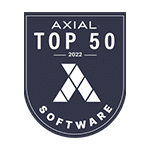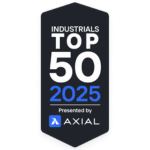
From Fiction to Reality
How The Terminator’s AI Dystopia Mirrors Today’s Defense and M&A Trends
In 1984, Arnold Schwarzenegger came back from the future as a Cyborg, attempting to kill Sarah Connor and eliminate her son John before he can lead the fight by humans against machines. The year he came back from: 2029. In that future time, machines had developed the ability to learn and act independently of humans. They advanced beyond human programming and technology and started an apocalyptical war against humans. The machines were winning.
So we know that the future described in the movie has not occurred…yet. But when you look at the weapons and technology being developed and evolved by the U.S. military, you can see the possibility of machines acting independently of humans. A Department of State commissioned report from earlier this year identified that artificial intelligence could lead to “catastrophic risks unlike any the United States has ever faced.” The most advanced AI systems “pose an extinction-level threat to the human species.” AGI (Artificial General Intelligence), which is a hypothetical form of AI with human-like or even superhuman-like ability to learn, could spawn “weaponized robotic applications such as drone swam attacks; weaponized biological and material sciences; and power-seeking AI systems that are impossible to control and are adversarial to humans.” Result: the Terminator future becomes a reality.
Not coincidentally, from an M&A standpoint, these technologies and the companies behind them are the hottest, most valuable assets in the Government and Defense space. AI, Machine Learning, and Neural Networks, coupled with Space and Intelligence customers and applications, are trading for double digit multiples. Remotely operated and autonomous weapon systems are garnering huge demand from acquirers. With companies developing drones and fighting vehicles outfitted with the capability to operate in GPS-Denied environments, weapon systems that can act and react independently in a conflict are years and not decades into the future. Semiconductor chip development is providing the engine to enable these systems. Acquirers are pouring significant capital into all of these areas as differentiation and customization of weapon systems will determine the winners in future armed conflict.
While the future predicted by The Terminator has not occurred, the race to develop and harness the enabling technologies underpinning a world where machines can operate independently of humans is being fiercely competed. The fact that M&A activity in these areas is so intense demonstrates that investors recognize how critical these technologies are and owning them is critical. Investors may be faced with hard decisions involving ethical uses of technology versus maximizing economic returns. It’s a strange paradigm that the technologies most valued today may become the most dangerous as well. “I’ll Be Back” – well Arnold, we’ll have to wait and see what the next five years bring.














